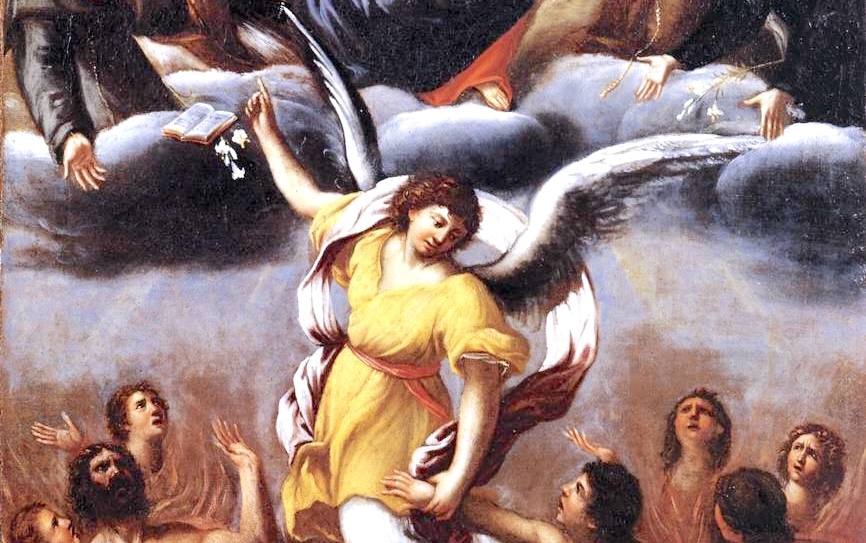Question: Listening to a Catholic radio station one day, they mentioned that leprechauns and fairies were demonic. This shocked me. St. Patrick’s Day celebrations always include leprechauns. Fairies are loved by little girls and big girls alike. I myself made a small fairy garden for me and my granddaughters. We also have many other fairy items. Are we now supposed to get rid of these, I thought, playful items? (Johnston, Rhode Island)
Answer: No, I don’t think it’s a problem for Catholics to use leprechaun or fairy imagery in a clearly imaginative or make-believe way.
The Church does not have any current official teaching on fairies or leprechauns. However, in traditional folklore, fairies and leprechauns were not the sweet and playful creatures that they tend to be in our modern depictions, and they have an association with pre-Christian European paganism.
So while the Church does not formally teach that today’s fantasy fairies are demonic, I suspect that fairies’ roots in pagan folklore are what prompted these comments on the radio.
It hopefully goes without saying that Catholics should not practice paganism or adopt any directly pagan practices. But there is a historic tradition of Catholic missionaries “baptizing” some of the more benign forms of pagan imagery and culture in order to make Christianity more accessible to the peoples who were being evangelized.
One somewhat legendary example of this is the Celtic cross; there is a story that St. Patrick combined the Christian cross with a pagan symbol for the sun in order to communicate the importance of the cross in Christian life.
At times, the Church has tolerated pagan imagery in non-religious contexts. For instance, our English-language days of the week are mostly derived from the names of Norse pagan gods. But this does not prevent the Church from using terms such as “Holy Thursday” or “Good Friday.”
If a person is interested in fairies or leprechauns because they seriously believe in these creatures and actually wish to attempt literal magic or otherwise become involved with pagan or “New Age” practices, then this would be spiritually dangerous and incompatible with Catholicism. But I don’t think this concern would apply to the vast majority of mainstream fairy or leprechaun imagery we see today.
As a parallel, we can enjoy fantasy stories, such as “The Lord of the Rings,” that have wizard characters in them, without it becoming a slippery slope for our seeking to attempt wizardry ourselves. In a similar vein, I think it’s fine to do things like create a “fairy garden” for the fun of creating an arts and crafts project.
Question: When I was evangelical, we said a “saved” person went immediately to heaven at death. In a recent homily our priest said most Christians, including himself, will likely go to purgatory at death. How can Jesus’ shed blood pay for a person’s sins but they not go to heaven at death? (Indiana)
Answer: Your priest is probably right that most people will do a stint in purgatory after they die. But going to purgatory does not mean that a person isn’t “saved” – it’s quite the opposite, actually. A person in purgatory is one who is ultimately and surely destined for heaven.
Jesus’ passion, death and resurrection did indeed save us from sin, making heaven possible for us. That is, whereas the original sin of Adam and Eve alienated humanity from God, Jesus’ perfect obedience to God’s will broke the bond original sin had over us. Through our baptism, by which we share in Jesus’ death and resurrection, we are personally freed from original sin in our own lives.
But just because we can go to heaven, sadly, does not automatically follow that everyone actually will. Freedom from original sin make us capable of entering into heaven, but it is, of course, still possible for us to commit our own sins after baptism.
We never cease to be creatures endowed with free will, and we can choose to distance ourselves from God through serious sin. This is what happens when souls go to hell because of mortal sins for which they had not repented.
We can never know for sure what happens between God and a soul at the last moments of life. Still, it is common knowledge that while few people would seem to be incorrigibly wicked at the time of their death, the majority of us are not saintly paragons of virtue, either. Even those of us who take our faith seriously will stumble and fall, and the holiest among us can struggle with stubborn venial sins.
And as the Catechism of the Catholic Church notes: “It is necessary to understand that sin has a double consequence. Grave sin deprives us of communion with God and therefore makes us incapable of eternal life. … On the other hand every sin, even venial, entails an unhealthy attachment to creatures, which must be purified either here on earth, or after death” (CCC 1472).
The catechism also tells us: “All who die in God’s grace and friendship, but still imperfectly purified, are indeed assured of their eternal salvation; but after death they undergo purification, so as to achieve the holiness necessary to enter the joy of heaven. The Church gives the name Purgatory to this final purification of the elect, which is entirely different from the punishment of the damned” (CCC 1030-1031).
Although purgatory is not exactly a “punishment” in the way we would tend to use the term today, traditionally purgatory has been understood to involve a degree of suffering. One common image for understanding purgatory is as a cleansing or purifying fire.
Jenna Marie Cooper, who holds a licentiate in canon law, is a consecrated virgin and a canonist whose column appears weekly at OSV News. Send your questions to [email protected].

